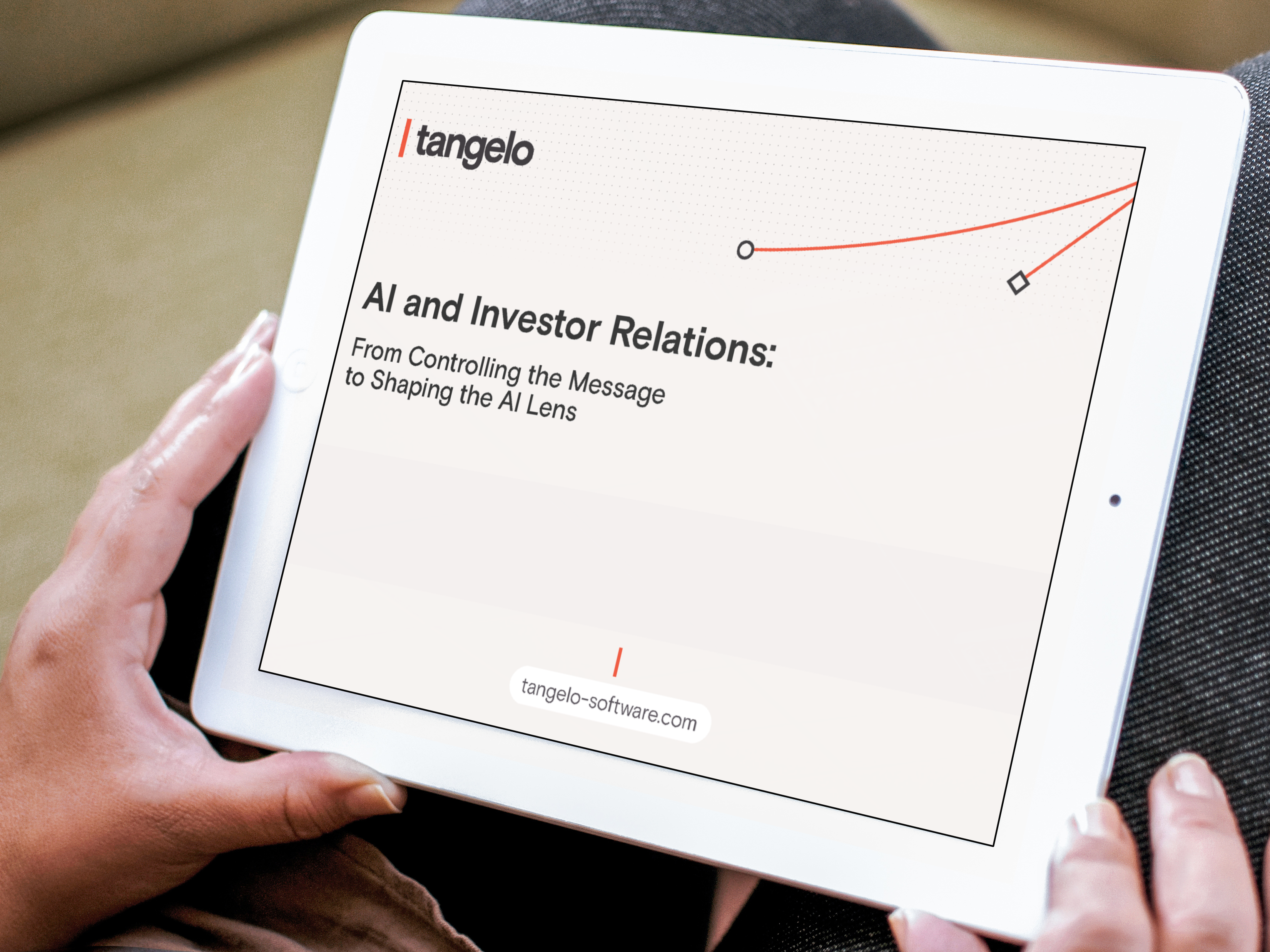AI and Investor Relations: From Controlling the Message to Shaping the AI Lens

Artificial Intelligence has, in just a short time, become the default research tool for investors and analysts. ChatGPT now counts more than 700 million weekly users, and Google’s AI Overviews appear in around half of all search queries. Instead of reading full reports, many investors now rely on AI-generated summaries or advice.
For Investor Relations (IR) professionals, this raises a critical question: What happens to your carefully crafted narrative once it is filtered through an AI lens?
This was the focus of our recent session with the NEVIR Investor Relations community on September 2, where we dove deep into how AI is already shaping the way disclosures are consumed.
To delve deeper into the topic, we produced a whitepaper that highlights formats, best practices, and the role of Tangelo.
Why formats matter in the age of AI
The annual report remains the anchor source of corporate information, but investors increasingly encounter it indirectly by using AI summaries. The same goes for other IR outputs like press releases, investor presentations, and ESG updates.
Not all formats are equal. A traditional PDF may look polished to human readers, but leaves AI confused about how labels connect to numbers. Accessible PDFs provide stronger structure, while microsites bring a digital-first experience that works well for both people and AI. And when it comes to ESEF filings, the difference between semantic XHTML for optimized iXBRL and non-semantic XHTML converted from a PDF is critical for AI-readability.
Best practices for AI-ready disclosures
From our analysis, three clear practices emerge:
- Use semantic XHTML for optimized iXBRL in your ESEF filings. This is the authoritative, structured source for compliance and AI.
- Provide Accessible PDFs (PDF/UA) for all reports and publications.
- Add a microsite to extend reach, improve navigation, and ensure AI has a reliable source to work from.
Security considerations
AI brings new risks too. Draft reports or sensitive figures uploaded to public AI tools risk exposure, and copilots integrated into office software can surface content not meant for wider distribution. IR teams need clear policies and secure platforms to harness AI without compromising confidentiality.
Shaping the AI lens
For decades, IR focused on controlling the message. In the AI era, the task is no longer just to tell the story — it is to shape the lens through which AI retells it. Structure, tags, and context cues now determine how effectively your disclosure survives the AI filter.
Dive deeper
This blog only scratches the surface. Our new whitepaper provides a full breakdown of formats, implications, best practices, and Tangelo’s role in helping IR teams publish AI-ready disclosures across multiple channels.
Latest resources
CSRD Day 2025 showed one thing clearly: sustainability is here to stay.
CSRD Day shows sustainability progress continues despite delays and shifting regulations.
Tangelo achieves renewed ISAE 3402 Type II and SOC 2 Type II certifications
Tangelo renews ISAE 3402 and SOC 2 certifications, strengthening client trust.
